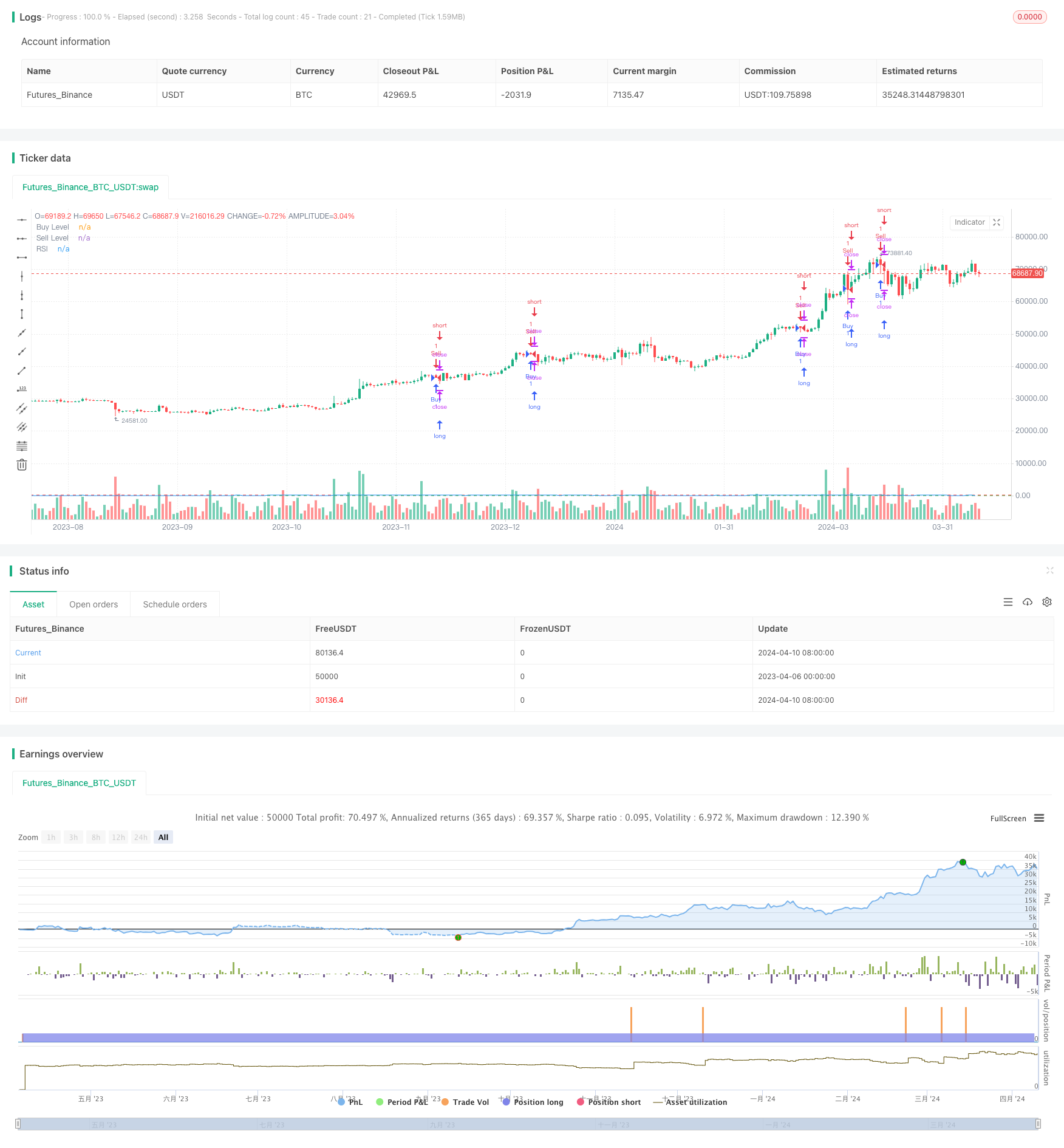
概述
该策略基于相对强弱指数(RSI)指标,通过观察RSI指标的超买和超卖状态,在RSI达到设定的超买和超卖阈值时分别进行买入和卖出操作。同时,该策略还采用了金字塔式建仓的方式,在满足一定条件时逐步增加仓位,以期获得更高的收益。
策略原理
该策略的核心是RSI指标,RSI指标衡量一段时间内价格的涨跌幅度,通过计算一段时间内价格上涨日和下跌日的平均涨跌幅度,来反映价格走势的强弱。当RSI指标达到设定的超买阈值(如75)时,通常认为价格已经过度上涨,出现回调的可能性较大,此时策略会进行卖出操作;当RSI指标达到设定的超卖阈值(如35)时,通常认为价格已经过度下跌,出现反弹的可能性较大,此时策略会进行买入操作。同时,该策略还设置了金字塔式建仓的条件,即在满足买入/卖出条件且持仓数量未达到设定的最大值时,会继续增加仓位,以期获得更高的收益。
策略优势
- 简单易懂:该策略基于经典的RSI指标,指标含义明确,易于理解和实施。
- 适用范围广:RSI指标适用于各种金融市场和交易品种,具有较强的普适性。
- 趋势把握准确:通过RSI指标的超买超卖判断,可以比较准确地把握价格的趋势拐点,实现低位买入和高位卖出。
- 金字塔建仓:在趋势形成过程中逐步增加仓位,可以更好地追踪趋势,提高策略收益。
策略风险
- 参数设置风险:RSI指标的参数设置(如超买超卖阈值、RSI周期等)对策略效果有较大影响,不同参数可能带来完全不同的结果,需要根据不同市场和品种进行优化。
- 震荡市风险:在震荡市场中,价格频繁出现超买超卖信号,可能导致策略频繁交易,造成较大的滑点和手续费损失。
- 趋势延续风险:当趋势强劲延续时,RSI指标可能长时间维持在超买或超卖区域,此时策略可能错失大的趋势行情。
- 金字塔建仓风险:在趋势末期或反转初期,金字塔建仓可能会继续增加亏损方向的仓位,放大策略损失。
策略优化方向
- 参数优化:对RSI指标的各项参数进行优化,如超买超卖阈值、RSI周期等,以期找到最佳的参数组合。
- 结合其他指标:将RSI指标与其他指标(如移动平均线、MACD等)结合使用,提高趋势判断的准确性,减少频繁交易。
- 动态止损:根据市场波动性和价格走势,动态调整止损位置,以期减小单次交易的损失。
- 金字塔建仓优化:根据趋势强度和持续时间等因素,优化金字塔建仓的条件和仓位增减幅度,提高策略稳健性。
总结
该策略基于经典的RSI指标,通过超买超卖信号进行交易决策,同时采用金字塔建仓方式追踪趋势,具有简单易懂、适用范围广等优点。但在实际应用中,需要注意参数设置、震荡市和趋势延续等风险,并根据市场特点进行适当的优化和改进,如参数优化、结合其他指标、动态止损、金字塔建仓优化等,以期获得更稳健的策略表现。
策略源码
/*backtest
start: 2023-04-06 00:00:00
end: 2024-04-11 00:00:00
period: 1d
basePeriod: 1h
exchanges: [{"eid":"Futures_Binance","currency":"BTC_USDT"}]
*/
//@version=5
strategy("RSI Strategy", overlay=true)
// Définition des paramètres
rsi_length = input(14, title="RSI Length")
buy_level = input(35, title="Buy Level")
sell_level = input(75, title="Sell Level")
pyramiding = input(5, title="Pyramiding")
// Calcul du RSI
rsi = ta.rsi(close, rsi_length)
// Règles d'entrée
buy_signal = ta.crossover(rsi, buy_level)
sell_signal = ta.crossunder(rsi, sell_level)
// Gestion des positions
if (buy_signal)
strategy.entry("Buy", strategy.long)
if (sell_signal)
strategy.entry("Sell", strategy.short)
// Pyramiding
if (strategy.opentrades < pyramiding)
strategy.entry("Buy", strategy.long)
else if (strategy.opentrades > pyramiding)
strategy.entry("Sell", strategy.short)
// Tracé du RSI
plot(rsi, title="RSI", color=color.blue)
hline(buy_level, "Buy Level", color=color.green)
hline(sell_level, "Sell Level", color=color.red)
相关推荐